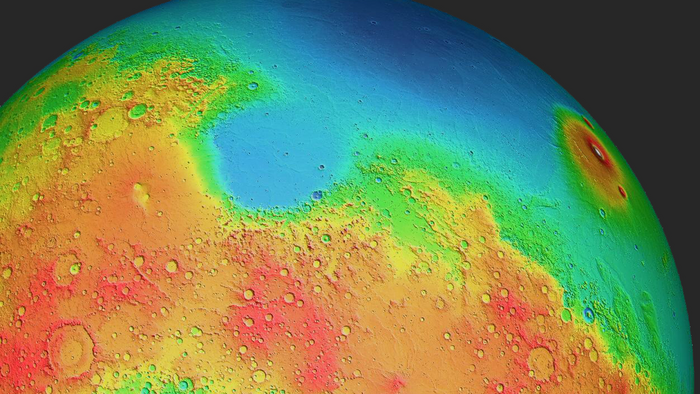A new study behind the neighboring planet of Mars is now looking into its crust, particularly how researchers saw that it has a tough exterior in several areas of the planet that were not seen before. In the study's findings, the researchers claimed that Mars has a crust that is made up of "heavy armor," and that is what the research centered on in this discovery.

(Photo : MOLA Science Team/ ETH Zurich)
Mars Crust is Made Up of 'Heavy Armor' Says New Study
Mars continues to captivate scientists and space enthusiasts alike. In a groundbreaking new study, researchers have discovered certain areas on Mars that possess an exceptionally tough crust, likened to a "heavy armor."
This remarkable finding sheds light on the planet's geological composition and was made possible by data gathered from the powerful marsquake recorded by NASA's InSight lander in May 2022. The team published its research last March and is yet to be peer-reviewed.
"This marsquake sent out strong seismic waves that traveled along the surface of Mars," says Doyeon Kim, a seismologist at the Institute of Geophysics at ETH Zurich.
The marsquake, with a magnitude of 4.6, stands as the strongest seismic event ever recorded on the Martian surface. The tremors generated by the quake caused surface waves that reverberated throughout Mars, completing up to three full circles around the planet. This seismic activity provided scientists with a unique opportunity to study Mars' subsurface structure and gain insights into its geology.
Read Also: Searching for Life on Mars May Start With Exploring Hawaiian Caves-How?
Marsquake and its Crust: InSight Provides Data
By analyzing the data captured by the InSight lander, researchers discovered regions on Mars with an unusually robust crust. These areas exhibited properties reminiscent of heavy armor, suggesting a geological composition distinct from the surrounding terrain.
"We were fortunate to observe this quake. On Earth, we would have difficulty determining the thickness of the Earth's crust using the same magnitude of quake that occurred on Mars. While Mars is smaller than the Earth, it transports seismic energy more efficiently," says Kim.
Discoveries About the Planet Mars
Many instruments and spacecraft went to Mars with the hopes of learning more about the planet, with the Perseverance rover being the latest to obtain samples and look for signs of life on the Red Planet.
There is also a study that looks into the old water bodies on Mars, with shreds of evidence of a previous existence of these, looking into the details left behind.
The data gathered from the InSight lander's seismic measurements serves as a testament to the advancements in planetary exploration and the invaluable knowledge obtained from such missions. By delving into the mysteries of Mars' subsurface, scientists can piece together the planet's geological history and gain a deeper understanding of its evolution.
As research into Mars continues, the quest to unlock the secrets of the Red Planet intensifies.
The recent study's findings not only shed light on the Martian crust's resilience but also fuel excitement for future exploratory missions aimed at unearthing further revelations.
Related Article: Martian Rivers? NASA's Perseverance May Have Found Evidence






